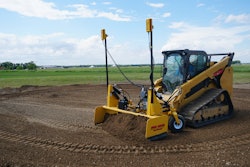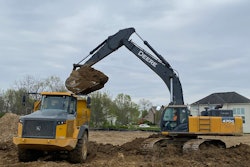
Electrification of construction equipment hasn't caught on in the U.S. as much as in other countries, but as emissions regulations increase and battery technology improves, contractors will likely start aiming toward battery-powered machines and trucks.
Much electrification trepidation comes down to cost, range and power availability. Both manufacturing and production of batteries have reached such a tipping point, however, that electric vehicle prices will be comparable to their internal combustion engine (ICE) counterparts in the light-duty sector as soon as 2025. Improvements to battery capacity since early model EVs hit the streets mean vehicles can travel longer on one charge. Even so, range anxiety remains a top concern, and part of that has to do with battery degradation. Newer EV battery production, however, builds in a failsafe to account for the degradation that happens over the course of full charge cycles. Additionally, electrified assets are projected to meet or exceed ICE output while providing the added benefit of instant torque.
In the construction industry, large strides are being made in equipment electrification. From backhoe and skid steer loaders to concrete mixers, major manufacturers like Volvo, Case, Bobcat, JLG and Liebherr are introducing electric alternatives to traditionally diesel-powered construction equipment. According to Liebherr, “The regulations for using diesel engines are becoming ever stricter, especially on building sites in large cities. This also applies to the ready-mixed concrete sector.”
In addition to meeting emissions regulations, electric construction equipment has the added value of low-noise zone compliance. This in turn provides a safer, more comfortable working environment for employees as noise and vibration are reduced in electric assets, thus reducing the chance of hearing loss and fatigue.
Electric models on the horizon
With more EV and E-equipment models being offered, electrification should become more prevalent in construction; a good thing since the construction and buildings sectors account for 38 percent of carbon-dioxide emissions worldwide, according to the U.N.’s 2020 Global Status Report for Buildings and Construction. With electric equipment generating instant torque, offering custom settings, and reducing maintenance and fuel costs, contractors stand to increase productivity and employee satisfaction while decreasing total cost of ownership. Let’s look at a few currently available makes and models and some hitting the market soon:
- Case 580 EV backhoe
- Volvo ECR25 electric excavator
- Komatsu electric excavator powered by Proterra
- Bobcat E10e compact excavator
- Volvo L25 electric wheel loader
- JLG G5-18A telehandler
- Liebherr EMT 905 and EMT 1004 T electric drum drives—EMT 905 is a fixed structure, where EMT 1004 T is a semitrailer with fully electrical tractor
- Freightliner’s eM2 truck
- Volvo FM and FMX trucks
- Peterbilt 579EV truck
Electrification considerations
Whether you’ve been considering fleet and equipment electrification for a while or you’re just entering the world of sustainability, there are a few primary concerns to take into consideration when moving from fossil fuel-based to electrified assets.
- Asset acquisition/replacement strategies: Getting ready to replace an older asset? One of the best times to bring in electrified assets is when retiring an older model. If you’re looking to replace a vehicle or piece of heavy equipment that’s costing you more than it’s worth, start looking at comparable electrified options.
- Choosing the right electrified assets: What make/model is best for your needs? With more electrified asset options available now than ever before, you must determine which model is best for your operation and the role you’ll be assigning it. Be as specific as you can when shopping around to determine what you’ll need in terms of battery capacity/range, payload, onboard power, quick charge capabilities, safety features, torque requirements, and more.
- Charging capabilities, infrastructure and schedule: What charging infrastructure is right for you? If you’ll be investing in more electrified assets down the line, this might be the perfect time to look into setting up your charging infrastructure and schedule.
- Maintenance: Do you have an e-mobility-certified tech on staff? If your fleet maintenance is taken care of in-house, you’ll need someone on staff who is certified to work on electrified assets. If you rely on a third-party service provider, be sure someone in your network is e-mobility-certified.
- Asset management software compatibility: Is your asset management software e-mobility compatible? Having fleet and equipment management software that seamlessly integrates all aspects of electrified asset data collection—from charging schedules and inspection reports to maintenance when needed – can give you a better TCO understanding for your electrified assets compared to ICE vehicles in your fleet.
About the author: Rachael Plant is a content marketing specialist at Fleetio, a fleet management software company.











